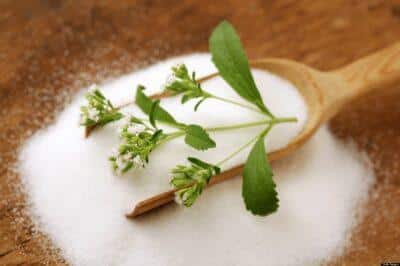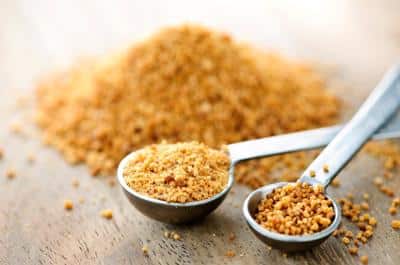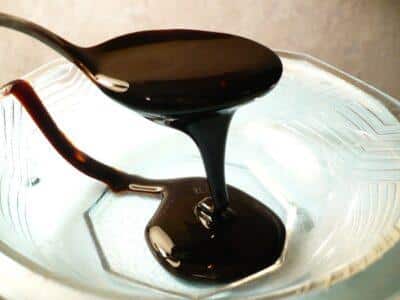Whether you’re watching your health and trying to limit your sugar intake, or you’re an off-gridder trying to live a self-reliant lifestyle — chances are you’re looking for natural, non-toxic alternatives to store-bought sweeteners.
There’s quite a variety that you can grow and make on your own, without the use of chemicals or hi-tech equipment. Organic sweeteners have been around for centuries, and many indigenous peoples around the world still use them today. It is only we in our modern consumerist societies who opt to use highly processed or refined sugars that are sold in our grocery stores – mostly out of habit, or because of their convenience.
If you like to garden, by all means consider planting these natural sugars. Some don’t require much space, as in the case of stevia, but a few might necessitate acreage and take a while to mature. If you have the time and space, start cultivating them now so you and your children can reap a harvest in the future. Here’s a list of beneficial plants that are known for their sweetening properties. There’s something on here for just about every growing zone:
1. Agave syrup. Agave is a Mexican plant whose sap or nectar is harvested, filtered and then concentrated into a thick syrup. It is thinner yet sweeter than honey, and is often used as a substitute for it and for sugar in recipes. Since agave dissolves quickly, it is also used to sweeten cold beverages like iced tea, smoothies and cocktails.
New Book Reveals How To Survive Diabetes During A Disaster.
Many regard it as a healthy sweetener because it has a low glycemic index, but its high fructose content (ranging from 45 percent to 95 percent; while regular sugar has 50 percent and high fructose corn syrup 55 percent) can make nutritionists and dieticians frown. The agave plant grows in USDA hardiness zones 9-11, thriving in full sun and sandy soil. Before you can harvest its nectar, though, you’d have to wait for it to mature from 7-10 years.
2. Barley malt syrup. This sweetener is made by cooking sprouted barley malt. Although thick, sticky and dark brown, it is only half as sweet as honey and sugar so it’s usually paired with other sweeteners. It has a pleasant malty taste similar to brown rice syrup.
3. Birch syrup. Birch syrup has a caramel-like, mineral-rich taste that’s slightly savory with a bit of spiciness. It isn’t used to sweeten pancakes and baked goods, but is more often mixed with dressings, sauces and glazes to flavor entrees like pork and fish. It is also used to sweeten beverages and ice cream.
4. Coconut sugar. Coco sugar is derived from the sap of the coconut palm tree, whose blossoms produce a sweet juice that is extracted and cooked in moderate heat so the moisture can evaporate. It is processed in liquid, block or crystal form. Coco sugar has a candy-like sweetness similar to brown sugar and molasses. It can substitute sugar on a one-to-one basis, especially in beverages, baking and cooking. Aside from having trace amounts of nutrients and fiber, coco sugar is valued for its low glycemic index. If you live in the warm states of Hawaii and Florida (hardiness zones 9-11), you’d do well to plant one of these.
5. Dried fruits and fruit juice concentrate. Who doesn’t like fruits? Dried, fully ripened grapes, apricots, plums, peaches, bananas and other fruits are fantastic sweeteners for cereal, oatmeal, granola bars, yogurt, deserts, breads and cookies. Succulent fruits like apples, grapes, pears, pineapple, watermelon and berries yield delicious juice that can also sweeten smoothies, canned fruits, homemade ketchup, tomato sauce and pickles. Cook the juice to a thick syrup; the longer it simmers over low heat, the sweeter the juice gets.
6. Maple syrup. Don’t forget this classic pancake-waffle condiment. Maple syrup is a great sweetener for breads, pies, cakes and cookies, aside from being a delicious topping on toast and ice cream – comfort foods that are sure to uplift spirits during long, dark winters, hard times, or at any other time. Maple syrup is also known to contribute to immunity and cardio-vascular health, among others. If you have the acreage, don’t hesitate to plant more maple trees.
7. Sorghum syrup. Sorghum bicolour, a species of the sorghum grasses originally from Africa, is an important crop worldwide. Sorghum is used for food, fodder, alcoholic beverages and bio-fuel. These drought-resistant canes are fast-growing, rising up to 6 feet in just 3 months. And like sugar cane, they have a sweet green juice that is pressed out and cooked down to a thick syrup. Ten gallons of juice will yield approximately 1 gallon of syrup.
Get Delicious, Nutrient-Dense Heirloom Seeds Here!
Sorghum-making, when done on a large scale, may require you to use special equipment and seek the help of friends and neighbours. According to sorghum grower and writer Sherry Tucker, sorghum mills were traditionally powered by animal labor, but small tractors or electric motors are now more common. Sorghum grows throughout zones 2 to 11.
8. Stevia. Stevia rebaudiana is a South American herb whose leaves are so sweet that a drop of their extract is enough to sweeten a cup of tea. In powder form, 1 teaspoon of stevia leaves is 8 times sweeter than a teaspoon of sugar. Stevia is now very popular among diabetics and weight-watchers because it doesn’t raise blood sugar, has zero calories and zero carbohydrates. It is also versatile – it can be used fresh or dried, crumbled and ground. It sweetens beverages, fruits, dressings, sauces, sorbets, yogurt and many creamy desserts. Though it is heat-stable, stevia isn’t recommended for cooking or baking since high heat can make the taste slightly bitter. Stevia grows in zones 8 or warmer. It likes full sun and will flourish in any well-drained pot, container or bed. It’s a fast-growing perennial that rises up to 4 feet. Three to four stevia plants will provide enough sweetener for a family of four for an entire year. A word of caution, though: The natives of South America are said to use it for contraception, so women who are trying to conceive should stay away from this herb.
9. Sugar beets. Most of the sugar beets, from which 50 percent of sugar in the US is made of, has, unfortunately, been genetically engineered. The USDA approved GMO beet seeds years ago and industrial growers have converted to them. There’s only a few stores nowadays that sell organic, heirloom, open-pollinated seeds, but they are available.
10. Sugar cane syrup or molasses. Though they come from the same source as regular white sugar, sugar cane syrup and molasses are unrefined and closer to their original state than the common table sugar. They also retain trace minerals like calcium, magnesium, iron, potassium and manganese, as well as Vitamin B6. Using a presser or crusher, extract the juice from the canes and then let the water evaporate over low heat. What will remain is a thick syrup that you can use to sweeten your beverages. Boil it a second time and it yields molasses; a third time, until it begins to crystallize, and you get blackstrap. Since they’re a tropical grass and are cold-sensitive, sugar canes will grow best in zones 9 through 11 but they can survive indoors or in a greenhouse. A grower in Georgia (zone 8) says it is a hardy plant and is actually a perennial. He harvests his canes in late fall just before the frosts, then covers the base of the plants with mulch. Come spring they come back to life, bigger and healthier.
11. Sugar pines. The pinus lambertiana, also known as sugar cone pines, are the tallest and biggest pine trees in the pine family. Known for their very long cones, sugar pines are found in the west coast from Oregon to Baja California. Like maple and birch, they have a sweet resin that can be boiled down to a thick syrup.
There’s enough on this list to choose from, so start reading up and find out which ones will grow in your area – or look into greenhouse growing. If there’s diabetes in your family, take note of each plant’s glycemic content — you’ll want to avoid those with extremely high fructose and sucrose levels. Whichever way, remember to use sweeteners in moderation.
Your best bet is to grow a variety of crops so that if one fails, you’d still have another. The great thing about natural sweeteners is that everybody loves them. If you don’t, someone else can and will find use for them — which make them a great item for bartering. So cultivate, stock up on seeds and learn all the necessary skills you need for processing now. You’ll realize just how handy they’ll come in the future.
Have you ever grown any type of sweetener? Share your tips in the section below:
 Off The Grid News Better Ideas For Off The Grid Living
Off The Grid News Better Ideas For Off The Grid Living







